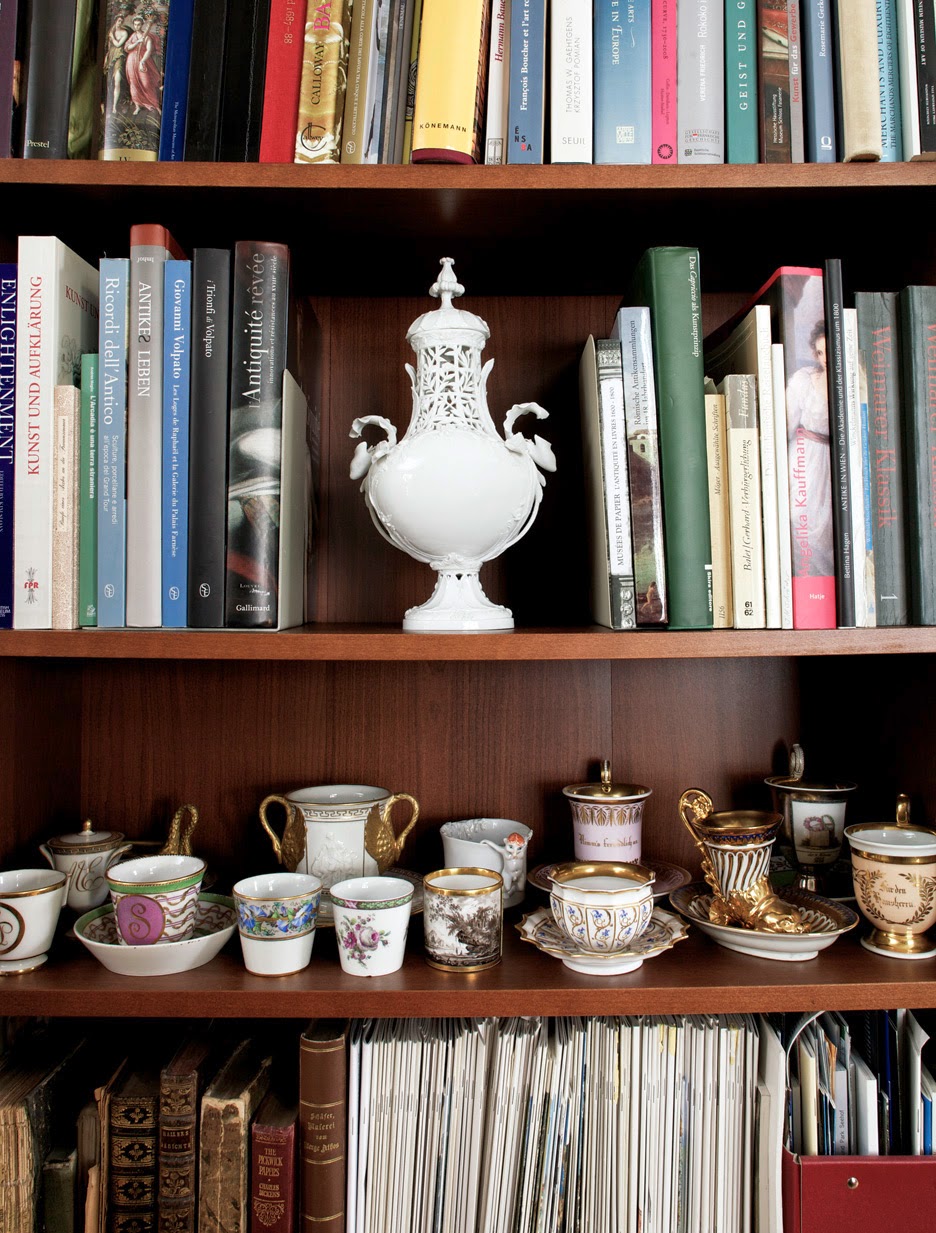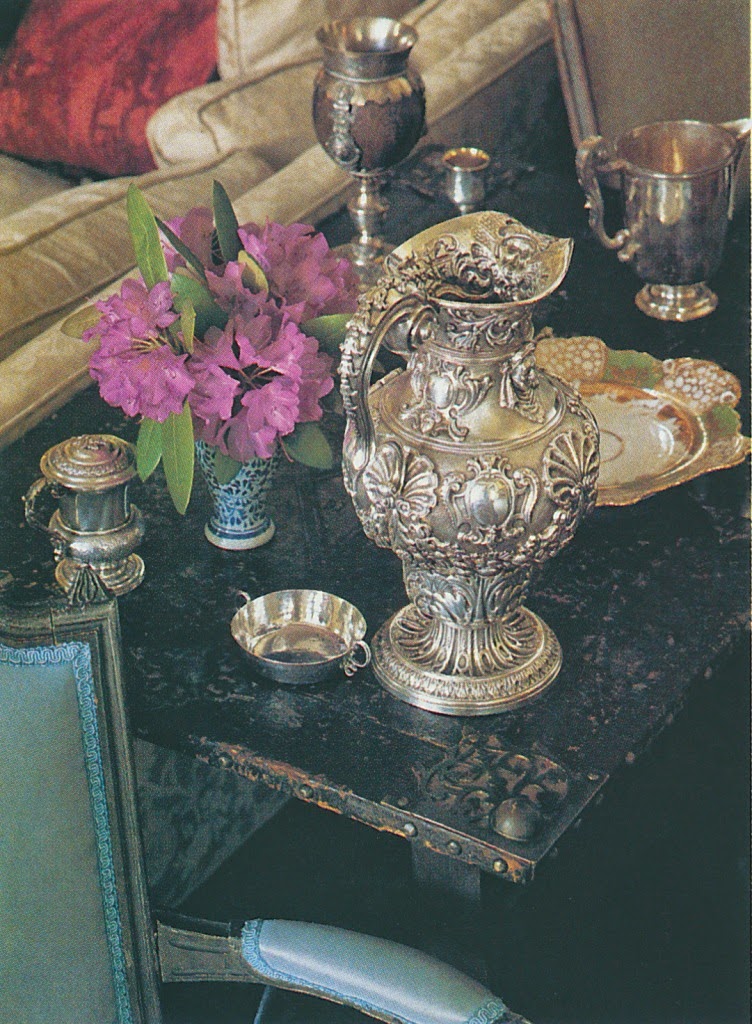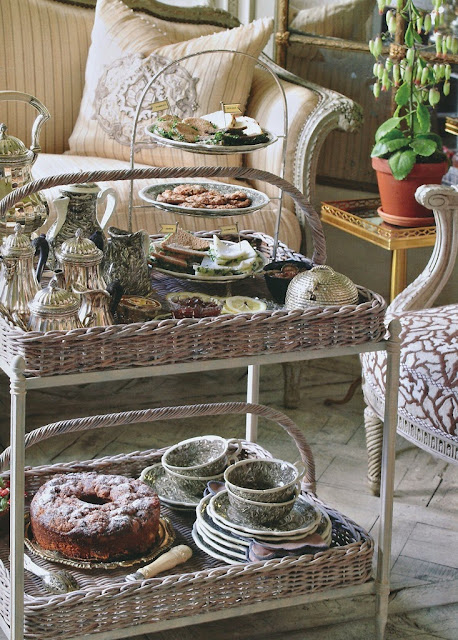Friday, June 27, 2014
Porcelain Kick #2: TheHighBoy
If the rooms that have been featured on my blog this week have intrigued you to the point where you want to start your own porcelain collection, then you might want to visit the recently-launched antiques website, TheHighBoy. I met the founders of the site, Douglas Scott and Olga Granda-Scott, at the Nashville Antiques Show earlier this year, and what impressed me most about them is both their knowledge of and their enthusiasm for antiques. It's also worth nothing that the couple is young. I only add that because I think that their youthful, technological savvy coupled with their passion for antiques will be a winning combination in today's high-tech world.
If you're not familiar with the site, it is an online antiques marketplace that is made up of a carefully-selected group of dealers. Their offerings include furniture, fine art, textiles, antiquities, and porcelain. It's their porcelain section, which has a little something for everyone, that kept me glued to my screen for a good hour the other day. Chinese porcelain and Chinoiserie-style pieces, always popular with collectors, are present on the site, as is Delftware. There are pieces that are very lady-like, such as the Dresden ink well set. And then there is my favorite type of porcelain: lettuceware.
I asked Douglas to share with me his thoughts on porcelain. He said, "I think what's really compelling about porcelain is that it's not just for plates or vessels, as many might quickly guess. Porcelain was often used in light fixtures, candelabra, washstands, dolls, drawer handles, etc. It is a very diverse material." And Olga added, "Porcelain speaks to me because of the high level of quality and craftsmanship that goes into each piece. Accessorizing your home or table with one-of-a-kind, rare accessories—such as porcelain—gives an added personal dimension to any decor." I couldn't agree more.
For more examples of porcelain and other antique furnishings (or to learn about their designer-only Concierge Service), please visit TheHighBoy.com.
A pair of late 19th-century Chinese figures
18th-century pair of Delft vases
Antique Dresden ink well set
Set of eight Wedgwood Lettuce plates
A 19th-century Meiji Period Satsuma bowl
Chinese Rose Mandarin cups and saucers, 19th century
Old Paris Porcelain veilleuse, c. 1830
Wednesday, June 25, 2014
Porcelain Kick #1
I almost started this post by writing, "Please forgive me, for I am on a porcelain kick this week." And then I realized that it was a stupid comment, because why does anyone need forgiveness for going on a porcelain jag? I mean, what's so bad about it?
Two people whose porcelain kick resulted in something quite spectacular were Patrick and Josephine Frémontier, who owned both the Paris home featured here (originally featured in House & Garden, October 1999) as well as an antiques shop in the same building. When I look at these photos, I can't stop marveling over the sheer volume of blue and white porcelain in the couple's salon. The Chinese vases and medallions, which practically envelop the room's lacquered-panel walls, were salvaged from a 17th-century shipwreck and then sent off to auction, where M. Frémontier "bought a substantial amount." According to the homeowner, the porcelain had been ordered for the Dutch market, which explains the Dutch-style motifs that adorn the porcelain. With their cache of Chinese porcelain in hand, the Frémontiers set about displaying the pieces in carved wall panels, a decorative arrangement that had originally developed in seventeenth-century Holland. The decorative scheme is certainly cohesive-looking, and if you study the photo below, you'll notice that even the undersides of the wall brackets are embellished with what appear to be porcelain lids.
There is more porcelain to come in Friday's blog post, but in the meantime, savor what House & Garden referred to as a "rare blend."
All photos from House & Garden, October 1999; Pascal Chevallier photographer
Monday, June 23, 2014
A Lot of Pretty Things
One of the highest compliments that I can pay someone who has an attractively-decorated house is, "She (or he) has a lot of pretty things." It's not an especially deep or erudite compliment, but it does aptly describe someone who has a home filled with beautiful fabrics, collections, and furniture.
Take, for example, the homeowner whose Paris house is featured here. The anonymous woman converted a former garage into a house that was a repository for her pretty things. There were fetching fabrics (mostly Madeleine Castaing prints), dignified antique furniture, porcelain, and books, all of which lent an air of sophistication to the home's interiors. And yet, the prettiness of the rooms was tempered by Neoclassical-style pieces and motifs, which means that perhaps I should modify my compliment to read, "a lot of pretty and handsome things."
Finally, it's worth noting the year that these photos were shot: 1999. Now that's not ancient history or anything, but fifteen years is a long time in the world of interior design. And fifteen years from now, this house will likely look just as chic as it did when first decorated in 1999.
All photos from House & Garden, October 1999, Pieter Estersohn photographer.
Thursday, June 19, 2014
A Passion for Porcelain
While doing some online research yesterday, I stumbled upon these photos of Samuel Wittwer's Berlin apartment, which appeared in the Swedish publication, sköna hem. Wittwer is an art historian, the Director of the Foundation of Prussian Castles and Gardens- Berlin-Brandenburg, and a porcelain specialist.
It's Wittwer's passion for porcelain that is really the story here. A bevy of blue and white pieces grace one room of Wittwer's apartment (alongside a blue and white painted commode, no less,) while blanc de chine figures make appearances in other rooms. And although there are some lovely fabrics and furniture here, at the end of the day, it's all about the porcelain. At a time when porcelain collecting isn't as fashionable as it used to be, it's refreshing to see a young man who has devoted his home to his porcelain.
All photos from sköna hem, Christian Burmeister photographer.
Monday, June 16, 2014
Carolina Irving in 1993
To most of you, Carolina Irving needs no introduction. The textile designer and recently-appointed Creative Director of Oscar de la Renta Home is featured often on blogs, and with good reason. She has style in spades, is a scholar of the decorative arts, and is a crack decorator to boot. And if you spend any time on Pinterest, Instagram, or any other social media site, then I don't have to tell you that her beguiling homes, which have been featured in an array of publications, have a tendency to elicit near-hysteria.
But what many of you may not have seen before are photos of Carolina Irving's Manhattan apartment, circa 1993. Irving's notable melange of styles and pieces was very much in evidence here, a mix that reflected her wide-ranging interests. Antique textiles bumped up against sterling silver, porcelain, and even a baseball. Also, after having seen photos of Irving's most recent homes, she seems to be a champ at bringing large-scaled rooms down to size, making these rather behemoth spaces comfortable and livable. But what I just might like best about this apartment was the book-lined entry hall. Can you think of a better greeting?
All photos from HG, January 1993, Ivan Terestchenko photographer
Friday, June 13, 2014
John Richardson's Folly
Over the years, I would occasionally come across a photo or two of the homes of Picasso biographer and art historian, Sir John Richardson. The few photos that I found were enough to intrigue me, such was the comfortable elegance of his homes. One photo, which was taken in his country house, showed a table that was laden with books and objects. The wall behind it was a memorable shade of turquoise blue. Another photo captured one room of his set at Albany, a room that was outfitted in refined antiques. As appreciative as I was of the few photos that I had found, I was left wanting to see more of Richardson's handsome homes.
And then yesterday, while flipping through a twenty-year old issue of HG, I found an entire article that was devoted to Richardson's house in New England. (Based on what I have read elsewhere, I believe that this house might be located in Connecticut, but I can't be sure.) Actually, the article wasn't so much about the house itself as it was about his then-newly built folly library, which provided Richardson with a place to write, read, and relax close to the big house.
The folly was designed in the classical manner and was inspired by Karl Friedrich Schinkel's Neue Pavillon at Charlottenburg in Berlin. The structure's classic architecture extends to its interior, whose walls are punctuated with pilasters, a beefy cornice, and pediments. And speaking of those walls, they are painted in the most beautiful, vivid shade of blue. Richardson had wanted "the luminous verdigris tint of certain nineteenth-century Russian rooms", which unfortunately turned out to be difficult to replicate. Instead, his talented painter came up with the solution of painting the walls an icy shade of blue and then treating them to a shagreen-colored glaze.
Richardson wrote that his folly proved so comfortable that he rarely spent time in the main house. After studying these photos, I can understand why.
All photos from HG, July 1993, Richard Felber photographer
Monday, June 09, 2014
Tea Time
Although I have never before hosted an afternoon tea at home, I do love the thought of doing so. There is something about this type of entertaining that is so gracious and elegant, not to mention practical, too. First, you don't have to be a cook nor employ a cook to host a tea. Breads, scones, and cookies can be purchased at a bakery, while tea sandwiches require little more than spreading and cutting. Second, afternoon entertaining means that your guests are out of your house by early evening, ensuring that you have plenty of time to clean up before bedtime. And finally, because weekday jobs are often a hindrance to afternoon entertaining, there is always the option of hosting tea on a Saturday or Sunday afternoon.
Someone else who appreciated tea was the late Jean Howard, still revered as one of old Hollywood's most accomplished hostesses. Howard often hosted teas, once telling a House & Garden writer, "Tea is the most civilized way to talk to people. You don't have to worry about who sits where or whether you have the right number of men and women. Moreover, if two people who disagree would just sit down with a nice cup of tea instead of a martini, they could work out their differences without saying a lot of things they'd regret later." Good point.
Françoise de la Renta was also a fan of inviting guests to tea. She once wrote, "Nothing is more welcoming than a delicious tea: The hour is perfect, after work, before theater, the ingredients are your choice, from simple bread and butter to the abundant tea of Nicolas Nabokov's childhood (Bagazh, The Memoirs of a Russian Cosmopolitan)." I have shown a photo of de la Renta's Nabokov-inspired tea on my blog before, but I'm showing it again because I think it is supremely elegant.
If you're still not convinced that afternoon teas are worth the fuss, then take a look at the photo at the top of this post, which shows Jean Howard presiding over her tea table. The pretty china, the trays of delectables, the elegant background. Can you imagine a more lovely way to entertain?
Françoise de la Renta set this tea table, which was inspired by the childhood memories of Nabokov.
In Fifth Avenue Style, Howard Slatkin wrote that "afternoon tea is perhaps my most favorite meal." With a tea trolley as lovely as this, I can understand why.
Tea set for the Comtesse de Paris.
A tea set in the kitchen at the château of the Duchesse de Sabran.
Tea with Sybil Connolly.
"The Uncluttered Tea Table" vignette at Tiffany & Co.
Subscribe to:
Comments (Atom)




























































